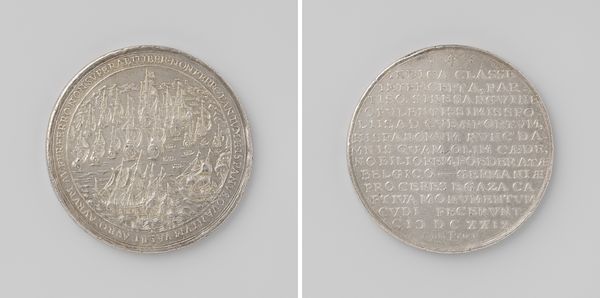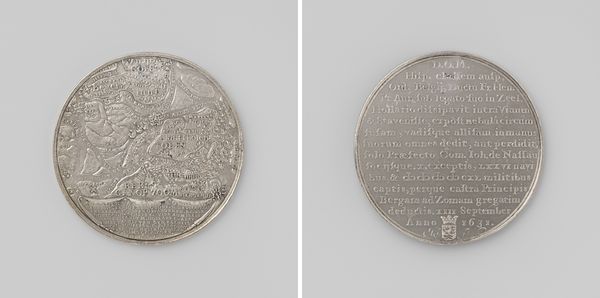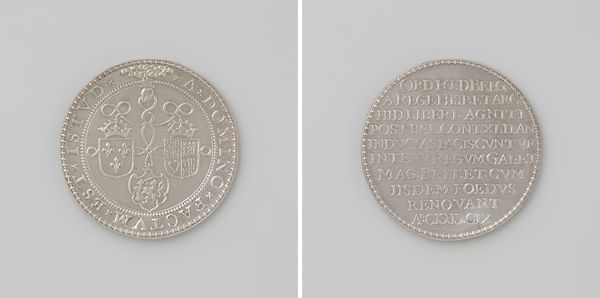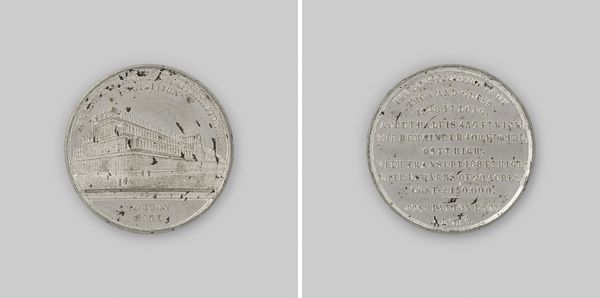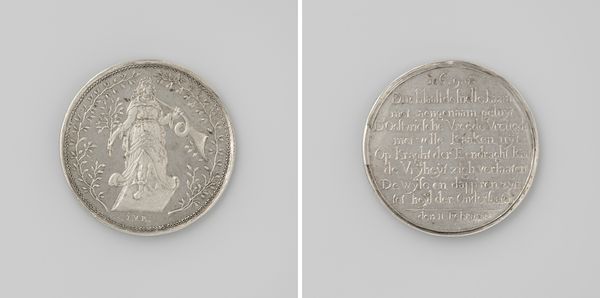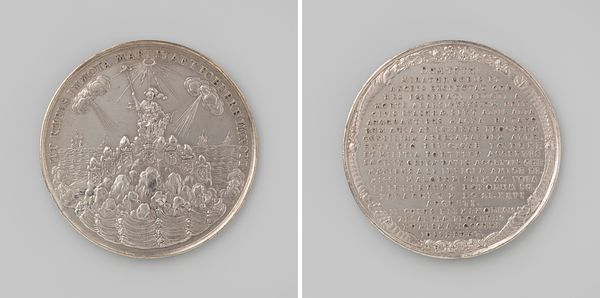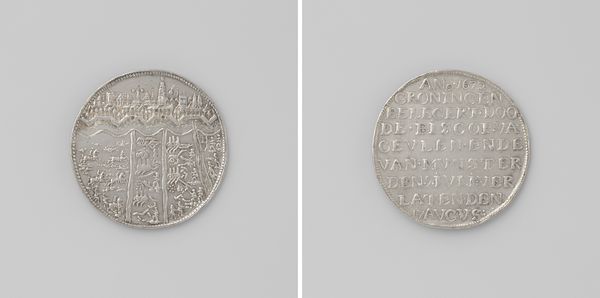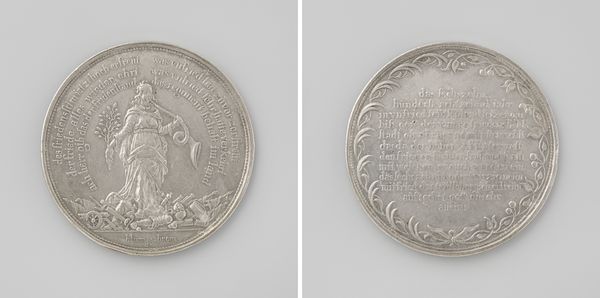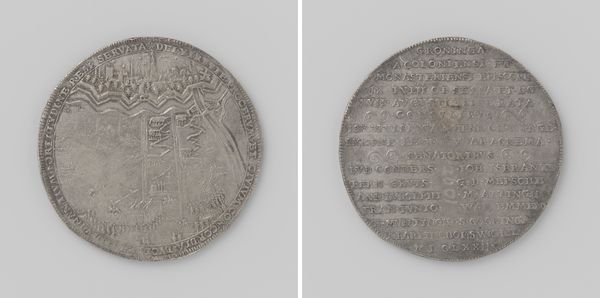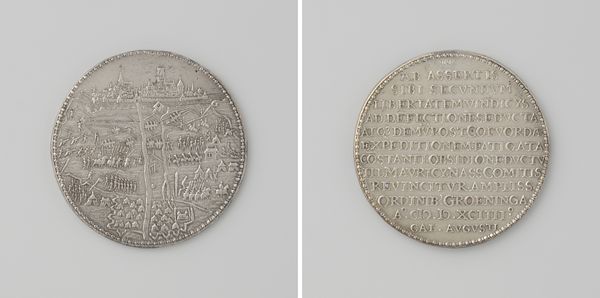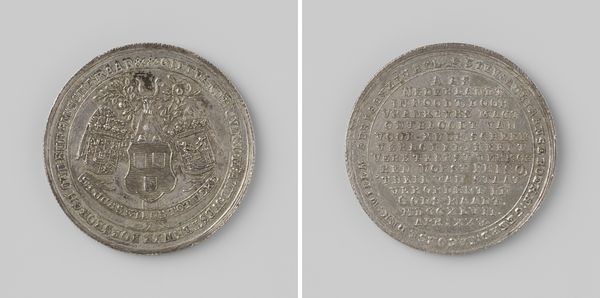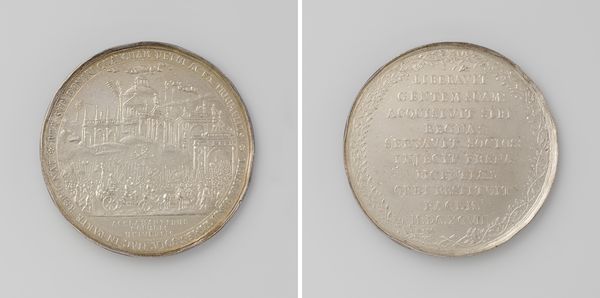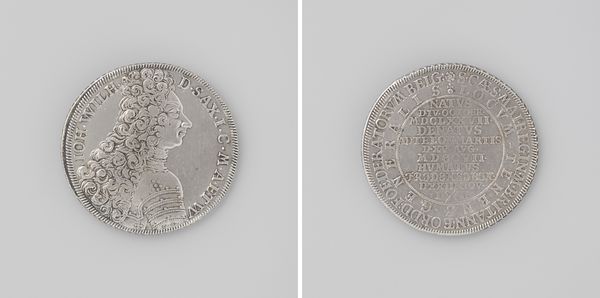
metal, engraving
#
baroque
#
metal
#
history-painting
#
engraving
Dimensions: diameter 5.5 cm, weight 46.44 gr
Copyright: Rijks Museum: Open Domain
Editor: Here we have "Zeeslag bij Gibraltar en het sneuvelen van admiraal van Heemskerck," or "The Battle of Gibraltar and the death of Admiral van Heemskerck," created in 1607 by Gerard van Bylaer. It appears to be an engraving on metal, possibly a coin or medal. It feels quite formal, with the very precise and densely packed text on one side. What do you see when you look at this piece? Curator: The sheer density of imagery and text on such a small object is significant. On the pictorial side, despite the small scale, a fierce naval battle rages. This isn't just a record of an event; it’s an attempt to immortalize Admiral van Heemskerck. The reverse side, filled with Latin text, reinforces this memorial aspect. Think about the symbolism inherent in maritime battles—control, power, trade routes. What feelings might that have inspired in people at the time? Editor: I can imagine that victorious imagery like this was very important for a nation’s self-image, or how the Dutch wanted to be seen. Does the battle itself have particular significance that's echoed here? Curator: Precisely. The Battle of Gibraltar was a major Dutch victory against the Spanish. Victory was often associated with divine favor and national pride. The engraving served as propaganda but also tapped into deeply held cultural beliefs about courage and leadership. Consider how the depiction of Admiral van Heemskerck transforms him into a symbolic hero. Editor: So the object acts as a lasting memento and a celebration of collective identity. Thank you. That's really deepened my understanding. Curator: Indeed. These seemingly small objects encapsulate so much of the historical, cultural, and personal meanings of the era.
Comments
No comments
Be the first to comment and join the conversation on the ultimate creative platform.
